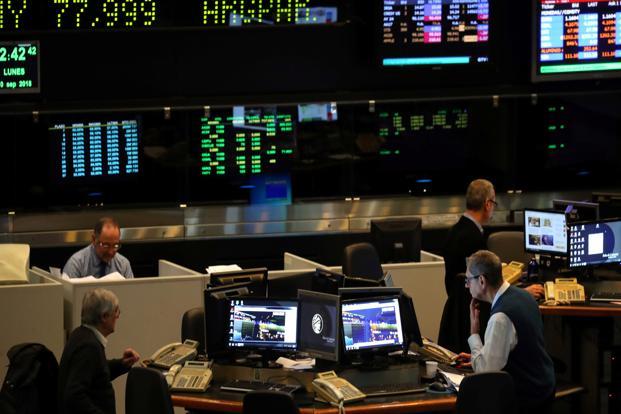Global Stocks Surge as US Shutdown Ends, Markets Eye Record Highs
London – Global stock markets are showing renewed strength as the United States government reopens, lifting investor confidence and fueling optimism for a strong economic rebound.
The easing of uncertainty has boosted global indices, with Wall Street, Europe, and Asia all reflecting positive momentum and renewed investor enthusiasm.
The U.S. shutdown’s conclusion has sparked a surge in global equities, pushing the Dow Jones, STOXX 600, and Japan’s Topix toward record highs.
Investors are viewing this development as a turning point for market stability, as delayed economic activities and data are expected to resume soon, strengthening forecasts for growth in the coming months.
In Europe, major indexes began Thursday’s session on a high note. The STOXX 600 climbed close to 1%, while France’s CAC 40 hit new all-time highs, signaling confidence in European markets.
This wave of optimism has offset weaker earnings reports from a few individual firms, highlighting the resilience of the broader economy.
In the United States, futures for major stock indices indicated steady optimism, with slight gains across key sectors.
Analysts are forecasting continued upward movement as financial markets digest the positive news surrounding the end of the government shutdown and the return of regular federal operations.
The reopening is also expected to improve investor sentiment by restoring confidence in fiscal stability and clearing the backlog of delayed economic data.
Market experts suggest that upcoming employment reports and inflation readings will help guide future investment strategies and central bank decisions.
Meanwhile, in Asia, stock markets are performing strongly. Japan’s Nikkei rose 0.4%, while the Topix index achieved a record high, signaling expanding investor appetite beyond high-growth tech firms.
Investors are diversifying portfolios into broader economic sectors, reflecting steady faith in Japan’s recovery and growth potential.
The Japanese yen, however, has weakened slightly against both the euro and the dollar, as the government continues to encourage gradual monetary adjustments.
This softer yen has benefitted Japanese exporters, boosting corporate earnings and strengthening stock market confidence.
In the commodities market, gold prices remain elevated above $4,200, signaling continued interest from investors seeking safe-haven assets amid fluctuating currency movements.
The calm in bond markets has also provided additional reassurance, with U.S. 10-year yields steady at 4.09% and German yields at 2.65%.
Oil prices experienced a modest decline, with Brent crude hovering near a three-week low. Analysts attribute this to OPEC’s forecast of a potential supply surplus in 2026.
However, industry leaders remain confident that demand will continue to rise in the short term, supported by global economic recovery and increased travel activity.
Across global exchanges, technology and industrial stocks are leading the way. Europe’s tech index showed strong gains, driven by rebounds from major semiconductor firms, reflecting a positive turnaround from earlier declines.
Investors are increasingly viewing this as a sign of renewed strength in innovation-driven sectors.
In London, the FTSE 100 slightly eased after reaching an all-time high earlier in the week, while the pound saw mild fluctuations following modest growth figures in the British economy.
Meanwhile, the Australian dollar rose, supported by strong employment data that signaled stability in the region’s job market.
Financial analysts are optimistic that the combination of a reopened U.S. government, easing inflationary pressures, and steady global policy decisions will sustain market growth into the new year.
The strong performance of equities worldwide demonstrates renewed global economic confidence and investor faith in long-term recovery.
As markets continue to gain strength, attention now turns to upcoming U.S. economic data and central bank outlooks. The optimism spreading through major global markets points to a new phase of resilience, stability, and growth across economies.
The world’s financial landscape is set for a brighter, stronger, and more connected future.



